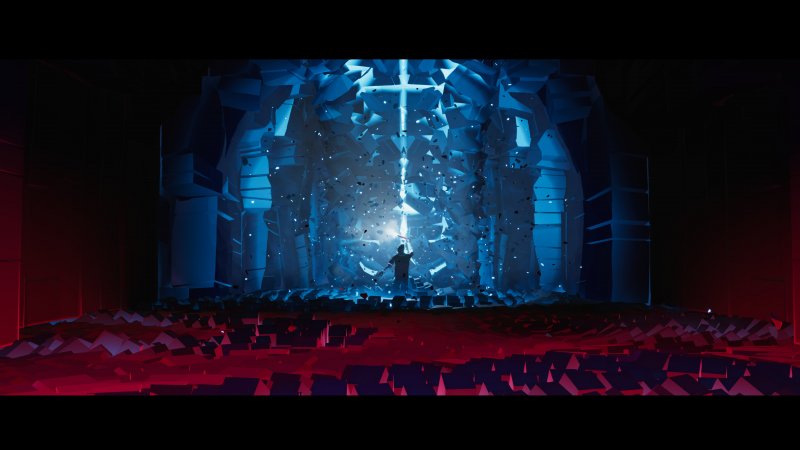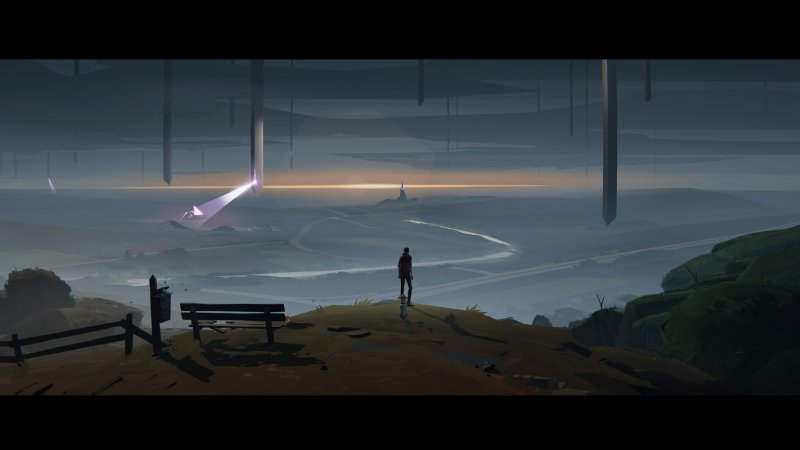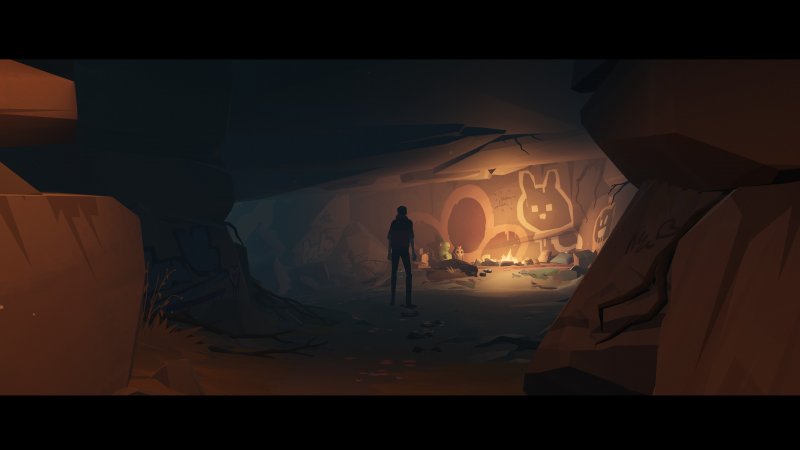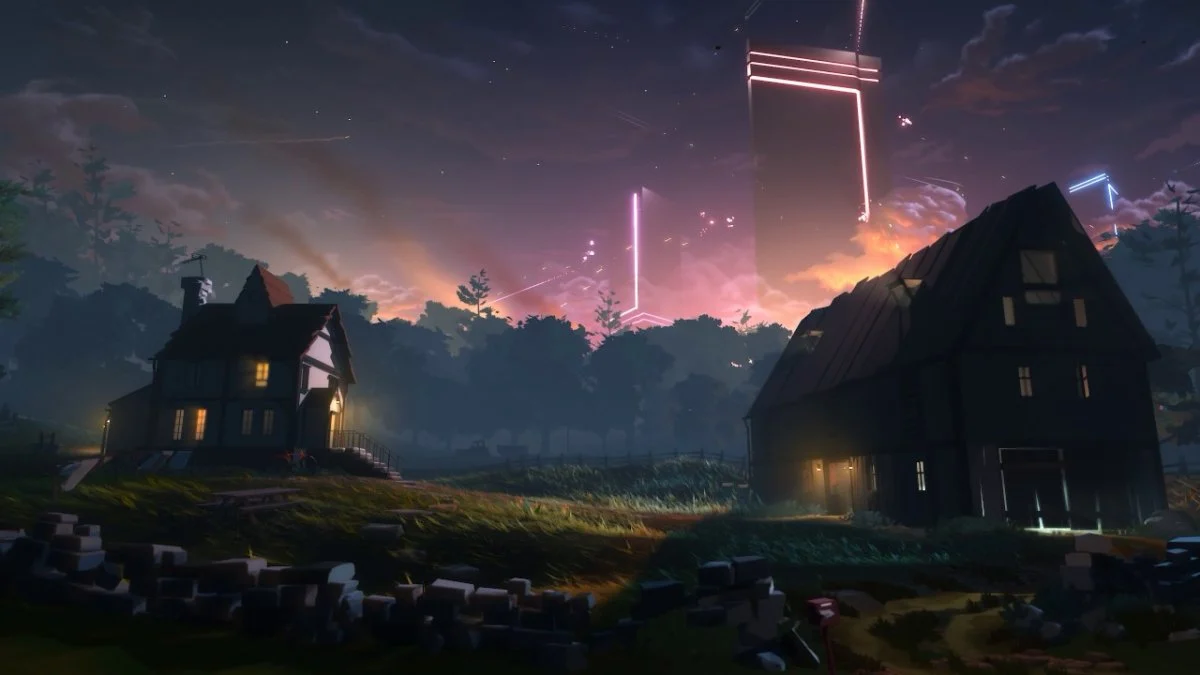The world of video game development is volatile and in constant motion: After the completion of a video game, it is not unusual to see a change in the composition of staff – often compressed by periods of intolerable crisis – if not the dissolution of the studios themselves. in a constant cycle of setbacks and new beginnings. Symbolic, in that sense, is the complex story of professional divorce. dino patti and Arnt Jensen, co-founders of Danish independent studio Playdead.
After years of working on two hugely successful projects, Limbo and Inside, Patti left the company in 2016 to find a new reality with animator Chris Olsen the following year. jump ships Since then – as Olsen has stated several times – he has been working on Somerville, a cinematic adventure seeking to step away from Playdead’s work to build a new road. Now that we have completed the first run of Jumpship, we cannot say that the intention was successful, although the studio has created a product that has undoubtedly been given careful attention in terms of aesthetics and direction. We tell you this in ours Somerville’s review.
Evil comes from above

Somerville begins one sleepy evening in front of the television. While a mom and dad are sleeping on the couch, their restless child manages to wander around the house where they shouldn’t, climb the divider between the living room and the kitchen and open the window. The noise wakes up the two parents, they are surprised. pink light Piercing the sky: Something is obviously wrong, and soon the family will find themselves in a truly surreal situation.
After a humanoid being in a strange suit invites the hero to take his hand, the man we take control of, gains a mysterious power associated with light. This will be decisive in the future. environmental puzzles, plenty in the roughly four hours required to complete Somerville. All of the anomalies brought by the huge monoliths that now dominate the terrestrial scenario are marked by bright signals: red, blue, pink lights, the extraordinary becoming commonplace in a wild explosion, reminding us of the stylistic choices adopted in Control. It’s definitely a different path compared to Playdead’s path in Limbo, which is dominated by a very successful combination of black and white, and Inside, where duotone is replaced by a stark and basic color palette played out in blues, grays and the occasional red tones. .
After promotional activities in the family home, aextreme exploration between open spaces, caves, stormy seas and structures meant to welcome survivors. Yes, because aliens are ruthlessly hunting humans, and soon the main character will find himself separated from his family, uncertain about the survival of his wife and young son. A situation that should evoke empathy and anxiety, but – in practice – leaves us cold and insensitive: the characters are completely devoid of the corporeality and humanity of Ico and Yorda in the eye-opening Ico, a true master class to bring the actor’s spirit. Humanoid-shaped pixels moving through the mysterious castle, without the two children saying a word.
Somerville also wants to create engagement without speakingbut it fails to do so: Although the narrative manages to present interesting ideas, at the end of the adventure, little or nothing is left of its protagonists in the hearts of those who play it, but it creates a story that aims to tell the soul. The sacrifice of such an unexpected but so heartless hero.
Camera (too much) perfection

The language of cinema has been used in the game world for many years to control what the actor sees, to influence the perception of characters and events, and to create a believable and versatile vision of worlds. Chris Olsen is strong in his work experience in the seventh art field, which he fielded in Somerville through the symbolic medium of the film industry: camera.
Often away from the hero, the Jumpship’s camera follows the hero’s desperate journey in search of family members to capture a sweeping view of the alien-occupied Earth and how the environment changes that dramatic night. alien beings who currently dominate the landscape of earth. Tracking shots are delicate, and the camera only allows for a few minimal shakes when the character is standing still. Under no circumstances can the actor influence the always-steady shot: what can be seen is completely controlled by the director and has a communication ability. sense of inevitability and the drag that got us running at full speed towards the end of Somerville.

In some cases, it is possible to move in three dimensions in space, and this choice was certainly a harbinger of complications for developers who did not always manage to make the possibilities of movement and interaction with the elements of the script legible. An unfortunate management of animations doesn’t help: going back to quoting a character created by Fumito Ueda, who is a master at managing the physicality of video games’ protagonists, the man is completely devoid of the weight and original movements of the boy. From The Last Guardian. Its steps are those of a wooden, emotionless machine; (frequent) failure to interact with levers and buttons, strange movements and unwarranted, which disrupts the player’s identification with the events the hero encounters.

Here, from a technical standpoint, Somerville would need more grace and care: in our test configuration, we experienced frequent drops in frame rates, as well as unfortunate interweaving between characters and elements of the script that completely ripped us off from the gloomy atmosphere. the apocalypse that the game should be typical of. There is a strong contrast between painstaking direction and artistic direction work, which can give moments of pure beauty and also contemplation of a world in captivity of immense forces and alien interventions, and well placed and codified on an aesthetic level. , it seemed to us at times that it was neglected by Jumpship, as if the final stages of development had received a dizzying acceleration. And given the apparent potential in Somerville, it’s really embarrassing that obsessive scrutiny of plans results in storytelling that is approached in a completely aseptic way: Alfred Hitchcock said that murders in movies are so clean, and that’s his purpose as a murderer. the director would show how difficult, how complicated it is to kill a man; in Somerville apocalypse spotlesssterilized – like the instruments of a good doctor – and in its sensitivity it leaves behind every emotional factor.
Less scary than expected

Central aspects of each cinematic adventure are exploration of the game world and solving environmental puzzles. In these respects, Jumpship certainly hit the mark, creating an interesting and coherent environment filled with well-thought-out puzzles, focusing on the powers acquired by the protagonist, and – as mentioned – light, which is Somerville’s true tenet. Unfortunately, there is no moral ambiguity in the puzzles: the hero is never asked to make questionable choices in the context of a dramatic situation, and this is technical exercise and not very human, unable to authentically and deeply involve the actor’s spirit.
We said the eye definitely plays a role in Somerville, but the same can’t be said for a sense that’s central to driving actor engagement: hearing. The narrative voices are reduced to the marrow, and humanity invaded by aliens is silent, indifferent, silent – and breathless: the hero never abandons himself to sigh from anxiety or exhaustion, despite all these difficulties. the overwhelming burden of travel he has to do it. If only we could feel the anxiety of listening to Limbo’s humming mosquitoes or Inside’s child’s labored breathing, the endless hustle and bustle of uncomfortable play environments; The inhabitants of the alien-occupied Earth never succumb to the unbearable cries of the scientists gathered around the test tank where the piece of flesh released by the boy exploded.
L’with soundEdited by Dominique Charpentier and Matteo Cerquone, it sharpens at the most dramatic moments, but in these cases, we didn’t appreciate the decision to bet everything on the non-narrative voices that once again Jumpship tends to want to suggest. The direction is “strong”, somewhat artificial, does not allow the world to breathe, often making it incoherent and disembodied.
professional
- excellent artistic direction
- Interesting and challenging puzzles
- Puzzles that can’t put us in front of really important choices
- No emotional involvement in the events of the characters
- Few technical flaws
Source: Multiplayer

